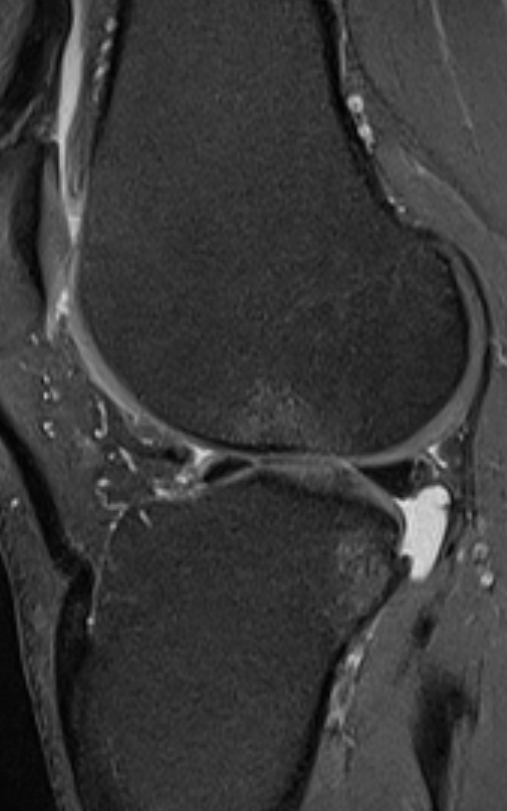Tears are diagnosed when fluid signal reaches an articular surfact on two or more slices. They can be oriented around the three main axes and are thus called
Horizontal Longitudinal and Radial
Horizontal tears are the commonest tears. Characteristics include:
• Older patients
• Often asymptomatic
• Can be associated with meniscal cysts
• Often occur in association with cartilage disease.
MRI reports can include elements including:
• Zone of involvement (1 peripheral to 3 central rim)
• Location (anterior / Middle / Posterior)
• Length of tear
• State of surrounding meniscus
• Location around popliteus
Characteristics include:
• Traumatic
• Can heal
• 80% association with ACL tear run perpendicular to the transverse axis of the meniscus
• They often lie in the peripheral vascular portion of the meniscus.
• They may therefore heal or be amenable to meniscal repair using sutures.
Longitudinal tears have a strong association with ACL rupture. Careful examination is necessary as they can be difficult to detect. Occasionally longitudinal tears pass through the periphertal attachments of the lateral meniscus that surround the popliteus tendon. These are called fasicle or strut tear
Radial tears run perpendicular or near perpendicular to the meniscal rim. The are diagnosed using the CLEFT and GHOST signs. An image perpendicular to the tear results in the cleft sign whereas one parallel to the tear causes the ghost sign Small Difficult to see Disrupt hoop forces Radial tears of the posterior third can result in meniscal extrusion
Occasionally tears and cysts are seen on US but ultrasound's inabiity to rule out meniscal tears precludes its use in this area
US can be used for guided meniscal cyst aspiration which is often a useful management step, delaying the need for meniscal surgery




